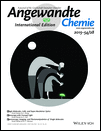From Chemical Gardens to Fuel Cells: Generation of Electrical Potential and Current Across Self-Assembling Iron Mineral Membranes†
This research was carried out at the Jet Propulsion Laboratory, California Institute of Technology, under a contract with the National Aeronautics and Space Administration with support by the NASA Astrobiology Institute (Icy Worlds), and supported by a JPL Planetary Instrument Advanced Concept Development grant (grant number S40AC1/42.14.101.07). L.M.B. was supported by the NAI through the NASA Postdoctoral Program, administered by Oak Ridge Associated Universities through a contract with NASA. JHEC is supported by the Spanish Ministerio de Ciencia e Innovación (grant number FIS2013-48444-C2-2-P). We acknowledge useful discussions with members of the NAI Thermodynamics, Disequilibrium, and Evolution Focus Group, and thank Dr. Bethany Theiling for the table-of-contents photo. Copyright 2015, all rights reserved.
Graphical Abstract
Chemical gardens: Self-assembling membranes in iron sulfide and iron hydroxide reaction systems were studied. The electrical potential and current generated by precipitation of the inorganic membranes were measured. The battery-like properties of the chemical gardens were demonstrated by linking multiple experiments in series, which produced sufficient electrical power to light an external light-emitting diode.
Abstract
We examine the electrochemical gradients that form across chemical garden membranes and investigate how self-assembling, out-of-equilibrium inorganic precipitates—mimicking in some ways those generated in far-from-equilibrium natural systems—can generate electrochemical energy. Measurements of electrical potential and current were made across membranes precipitated both by injection and solution interface methods in iron-sulfide and iron-hydroxide reaction systems. The battery-like nature of chemical gardens was demonstrated by linking multiple experiments in series which produced sufficient electrical energy to light an external light-emitting diode (LED). This work paves the way for determining relevant properties of geological precipitates that may have played a role in hydrothermal redox chemistry at the origin of life, and materials applications that utilize the electrochemical properties of self-organizing chemical systems.





